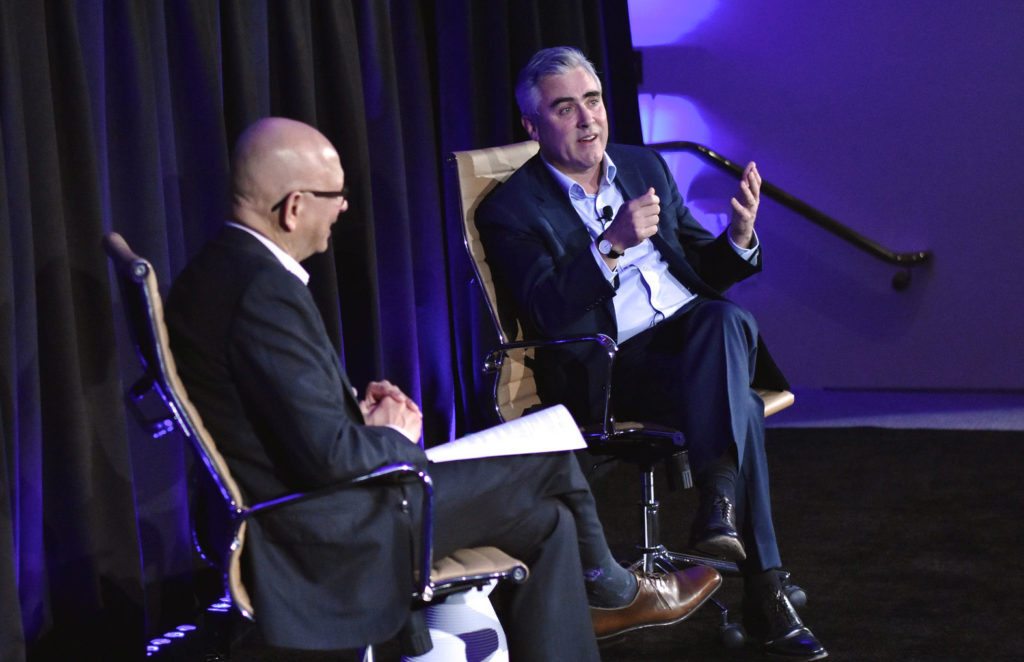Target’s New Frontier: Investing in Its Digital Future by CDT

“We have to be brave,” said Michael E. McNamara, Target’s chief information and digital officer at the Center for Digital Transformation’s third annual “Road to Reinvention” conference at the UCI Paul Merage School of Business on March 23. McNamara was talking about the retailer’s need to reset its finance models so that it could invest in its digital business. Target’s physical assets were important, he said, but the real growth would come from digital.
When Target took control of its online site, outsourced to Amazon for the first ten years of operation, it was a decade behind the pace. After the massive hack of its security and payments system in 2013, Target brought in defense contractors to help it adopt a data security mindset so that it would respond immediately to breaches. McNamara came onboard to ensure that Target had adaptive architecture with agile capabilities so that it could deliver on customer expectations.
Alignment with strategy is vital. When McNamara arrived, there were hundreds of tech initiatives underway. He invited executives to help him whittle the number to a handful, according to each project’s relevance and contribution to Target’s goals.
In-house engineering talent is also critical. McNamara hired software engineers and deployed small scrub teams for software development. Each team consisted roughly of eight people—engineers, people from merchandising, retail, and supply chain, a product manager, and a business analyst who could translate business models into technical specifications—and so software wasn’t developed in a vacuum. Equally important, Target became an open source shop: rather than start each project from scratch, its engineers built on the successful code of others for free.
Software is critical. Target was rolling out new urban formats, TargetExpress and CityTarget, where space was tight and product assortments had to match “hyper local” preferences. The retailer had to push a billion single units through its supply chain as efficiently as whole pallets. “That’s a math problem like sorting out L.A. traffic,” McNamara said. He turned to artificial intelligence and automated decision-making to help determine the minimum viable units, analyze consumer purchase data, and refine the mix for each store. He said that, with digital sales, marketing, and promotions—such as its Cartwheel app, which sends personalized coupons to shoppers—Target is pushing the frontier of efficiency online and in stores.
